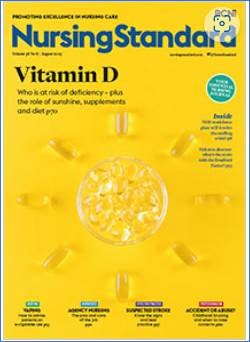Patient experience is an important marker of the success of a department or service.
Nurses are increasingly involved in patient experience surveys and departmental evaluations.
Capturing patient experience is one way of ensuring that patients’ voices are heard and can form the basis of an audit or service improvement project designed to evaluate or enhance the patient-centredness of care.
As such, it is extremely important that staff understand what patient experience is, how it differs from patient satisfaction, as well as an insight into the different methods for measuring this crucial marker.
Kathryn says, “We cannot improve our departments and services for patients if the methods used for collecting audit information are unsound.”
Drawing on experience of working in research
To write the piece, Kathryn has been reviewing for a few journals over a number of years, and last year an editor from the Nursing Standard approached her to write an article that drew on her experience of working in research. The subject of the paper was to be the methodology behind capturing a patients experience in the clinical setting.
To write this, she completed a full literature review on the subject and drew on her experience working in clinical research for 17 years.
She says, “the only barrier I encountered was time. It is not easy finding the time to research and write a paper when you are working full time – luckily, I had some annual leave booked in which helped greatly!”
Kathryn has been a research nurse since 2007 – starting in a band 5 role, then moving on to a band 6 role once she met all the relevant competencies.
She has always worked on the clinical research platforms – first at the Clinical Research Facility (CRF), and for the last 9 years, at Clinical Ageing Research Unit (CARU).
She says, “patient experience is a crucial measure of the quality of patient care in healthcare settings. It encompasses all the patient’s interactions with staff and their exposure to equipment, procedures, environment and service structure during one care episode.”
